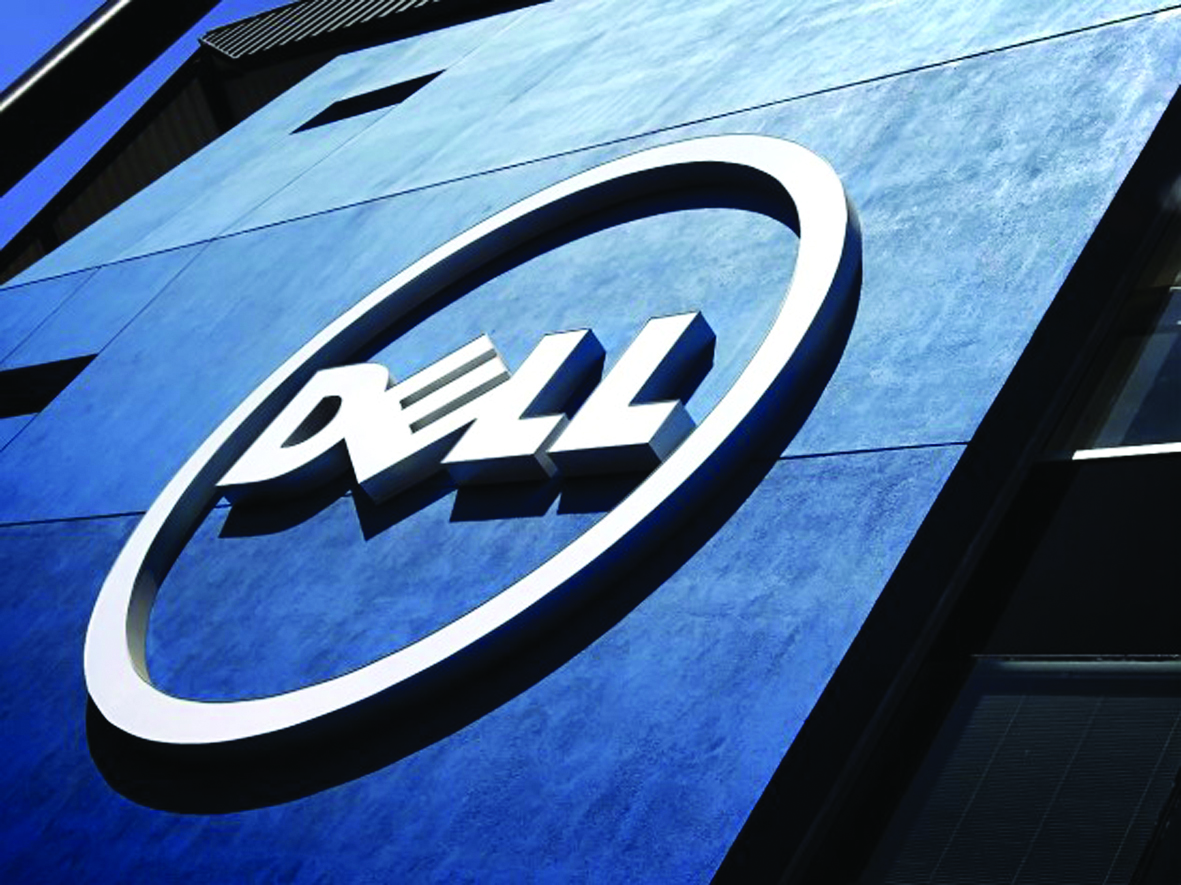A sense of purpose

Corporate purpose can have a huge impact on the long-term success of any company. From where should it arise within the organisation and how should a purpose-driven change programme be implemented? Speakers at brand agency Appetite's ‘Business, on purpose’ event share their thoughts
Walt Disney – the original imagineer, the man whose dream built an empire – said, “I only hope that we don’t lose sight of one thing; that it was all started by a mouse.” Disney’s curiosity, ideas and imagination inspired millions, redefined the business of entertainment and created one of the most successful brands in the world. That heritage has inspired a purpose driven
by making people happy. All of the company’s strategic business developments and goals relate back to that core purpose.
“What do you stand for?”asks Laura Haynes, chairman of brand consultancy Appetite. “What is the impact you’re having?” Those questions began a discussion on purpose, facilitated by Appetite, that drew on ideas from philosophy, communications theory and social change drivers. The event, ‘Business, on purpose’ is the first in a seven-part series that will explore purpose and the way in which organisations interact with their communities and the wider world.
Corporate purpose is something being reexamined by board rooms worldwide, but its roots are deep. The earliest ‘corporations’ – the Roman Empire and the Catholic Church – both had a strong purpose that guided their actions, the beliefs of their employees and leaders and the strength of the communities they helped build.
Public services organisations are no different. The NHS says its purpose is, “We create the culture and conditions for health and care services and staff to deliver the highest standard of care and ensure that valuable public resources are used effectively to get the best outcomes for individuals, communities and society for now and for future generations.” Doctors also ascribe to the Hippocratic Oath, one of the earliest examples of a profession-wide ethical standard. Police forces, fire brigades and militaries also operate with the purpose of acting for the public good – an interest that upholds their responsibilities to stakeholders.
Modern businesses are built on their forebears, many of which emerged during the Industrial Revolution. That era was known for its technological innovation, but also the development of workers’ rights and a business’ social purpose. While then, as now, some companies executed unethical operations, some offered their workers healthcare, housing and support because they recognised that a happy, healthy employee was a productive employee – and that makes a difference to the bottom line.
Speakers at ‘Business, on purpose’ said the day-to-day reflection of the corporate purpose is if it gets employees up in the morning and encourages them to be productive at work. Thus, the internal positioning of the company’s purpose should allow employees to feel like they are part of the organisation’s success. Externally, purpose can be simply, ‘selling the best products’ but for many, purpose focuses on the company’s role in the communities in which it operates and its contribution to the overall social and environmental good.
Gordon D’Silva, founder and chairman of the Good Business Alliance has championed this positioning. Though Haynes had to present D’Silva’s comments as he was called out of the country unexpectedly, he says, “The greatest challenge to private capital in the 21st century is the rise of global inequality and it’s the social entrepreneur who can help find management solutions to ongoing and perennial societal problems that can impede business advantage.”
He says CSR was an initial step in this direction but that it became motivated by brand building and promotion. This led to CSR activities being criticised of greenwashing and of not effectively helping the communities they purported to be supporting. D’Silva says companies have started to realise that societal issues affect them. Unilever knew its target audience was women, but found that many women were not financially independent in a way that would make them in charge of purchasing decisions. By fighting for female empowerment and supporting women globally, it facilitated profits from a key audience.
"We believe businesses should seek to create long-term sustainable success that benefits all
of its stakeholders and wider society as well"

What is required now, he said, is for social innovators – the dreamers of the world – to ally with entrepreneurs to make change. Profit and social good are not mutually exclusive, he argues, particularly within the modern business world. “The free market economy is indeed still the only socio-economic system capable of delivering a model for good business,” says D’Silva, “But the biggest threat to business growth is the unparalleled growth in societal inequality and that’s one of the things that new business models in the future will need to solve.”
The Good Business Alliance is a kind of tangible solution to the thinking behind corporate purpose. Companies are seeking to define their roles in society. They want to position themselves as successful businesses, but ones that can address issues affecting their communities. And it’s good for business, too.
In 2009, McKinsey studied the link between CSR and financial results, finding that CFOs said CSR was a benefit to shareholders, but that they couldn’t pinpoint how. This year, a Guardian article on transparency in business said ethical operations and transparent leaders made for a better culture and a happier workforce. This then has a direct impact on the bottom line. The evolution of the corporate approach to acting ethically and for social good strongly ties into purpose.
That change, however, has to be led from the top and reflect the real culture within the organisation. AnthonyCarey,partnerataccountancy firm Mazars, says the board has the responsibility to lead the organisation through change to create purpose.
For Mazars, the recession made the relationship between business and society that much more apparent.
The financial crisis saw 77% of people in the U.S. and 67% in the UK say they trusted business less in 2009 than they did in 2008, according to the Edelman Trust Barometer. In 2007, the study recorded 58% of people in the U.S. say they trust business to do the right thing. That number dropped to 37% in 2008. In the UK trust stayed level at 36%. In the U.S., that number is back up to 65% this year and hit 67% in the UK in 2014.
That severe decrease in the belief that business can do the right thing led Mazars to develop its culture and corporate purpose and rethink its relationship with society. “We wanted to look at how business could help rebuild that relationship with society for the benefit of business as well as society,” Carey says. “That’s what led us to doing the board charter. We were keen to make a contribution that would actually make things happen. We believe businesses should seek to create long-term sustainable success that benefits all of its stakeholders and wider society as well.”
For Mazars, that purpose was strongly entrenched with the board. “If there was going to be change,” he says, “The board had to buy into it.” But, what was key, Carey adds, is that the purpose should be embedded throughout the business, not just with the leadership team. “It’s almost like a country’s constitution,” he says. That can be a conversation that goes both ways too, as employees should help leaders understand what the company’s culture is all about and what values are important to them. Carey says, “Make sure, as a board, that the culture is what you think it is. It’s absolutely critical if you’re going to build a purposeful business.”
By leading the organisation through a change, particularly one geared around purpose, the company can manage its reputation in the long term.
Nicolas Mamier, Appetite’s managing partner, who spoke next, discussed the ways in which a corporate purpose can be defined and articulated. For a full breakdown, see additional content below.
He likened companies to actors or performers in that they are skilled at building connections and bringing the audience – in this analogy, their employees – into the performance. He advocates for a participatory culture. “Your companies and your purpose don’t exist in isolation. Each and every company exists within the wider world and has a role to play and a responsibility to its communities,” Mamier says. He says people who believe in their organisation’s purpose are more productive and happier at work, which leads to better retention, lower turnover and increased employee recommendations. This makes for a more sustainable employer brand. For companies to compete in a challenging marketplace for the best talent, they have to differentiate themselves in some way. A coherent and effective corporate purpose is a strong way to do so.
Once employees do join the company, that purpose has to be reflected in the internal culture. Andy Moore, insights and research director at Brand Finance and Sarah Shields, executive director and UK general manager at Dell, document instances in which this is achieved.
Shields says growth and change in the business itself prompted inspirational leader Michael Dell to return the organisation to its core purpose: “To deliver technology solutions that enable people to grow and strive and reach their full potential everywhere.”
That purpose is of course geared toward customers, but it required a company that had expanded through acquisition as well as returned to a private business model to establish a consistent internal culture. For more from Dell, see the additional content below.
Similarly, Vodafone, at which Moore worked prior to joining Brand Finance, had to integrate a global workforce behind a single purpose in order to achieve its goal of becoming a top-ten brand. “The goal, to be honest, had its origins in commercial necessity,” Moore says. But that allowed Vodafone’s purpose to seep through every layer of the company and drive change. The mentality of connecting people became the call to action and was the force for change internally as well as the external objective.
"The key stakeholders when we’re talking about the topic of purpose would be the employees at the centre, and then the customers"
The change paid off as Vodafone was named the number five brand in the world and saw its goal of connecting people bring the organisation together and its commercial activity reach new audiences worldwide. Moore says linking the business strategy, different audiences and purpose is key to success. Many programmes, like Vodafone’s or M&S’ Plan A programme, begin as internal-facing and then reach out customers to great effect.
Moore adds, however, that proving the success of a change programme driven by purpose is a tricky necessity. As purpose is determined by business leaders and tied closely to commercial objectives, it should have a clear impact on bottom line. But measuring that impact requires identification of the key drivers affected by purpose.
Brand Finance, which evaluates brand and intangible assets, advocates setting clear objectives and identifying ways in which to measure the impact of purpose at the outset. Moore says there is a tendency to post-rationalise and select indicators that prove the outcome after the change process has occurred which can lead to false ROI measures.
Often, purpose-driven change has an effect on customer retention, recruitment and turnover rates – those can be measured before and after the programme. “The key stakeholders when we’re talking about the topic of purpose would be the employees at the centre, and then the customers,” Moore says. “A strong purpose will impact very powerfully on the employees.” Engaged employees then improve customer relationships, which leads directly to an impact on the bottom line. “The employee can be such a powerful multiplier of purpose,” Moore says.
Disney is responsible for the success of leading art school, CalArts, at which many future employees are educated, a thriving family of theme parks run by ‘cast members’ and an internal culture that both feeds off and informs the cult-like reverence it inspires in its external audience. Strong purpose is responsible for most of this success.
Purpose can make a difference to any organisation, but it has to start from the top, impact every stakeholder group and reflect the business objectives set out by the company.
Appetite’s series of seven events on corporate purpose will continue with the next event, ‘Crossing the burning bridge, on purpose.’ Full details to be announced shortly.
TRANSFORMING A CORPORATE CULTURE

Dell had lost its way. It was competing in a challenging sector against companies with a well- defined sense of self. It needed to get back to its original purpose – producing technology that allows people to reach their full potential.
Sarah Shields, executive director and general manager in the UK, says acquisitions and growth led to a dilution of the brand. Yet Dell was founded by an early computer visionary, Michael Dell, who led the organisation through a purpose- driven change that allowed it to regain its identity.
Acquired companies were aligned to Dell’s brand values and integrated into its culture. Privatisation helped Dell focus on its purpose for the long term without concerns over share price. Now, 90% of employees say they’d recommend Dell.
Every employee is aligned to our strategy. Everybody feels part of Dell’s success. Having that common purpose pays dividends,” Shields says.
Purpose, in practice

Three steps to purpose, with advice from Oliver Cromwell (pictured), from Nicolas Mamier, managing partner of Appetite
Examine for truth
“The unexamined life is not worth living,” – Socrates Companies should listen to their employees when defining their corporate purpose.
Pause for brave thought
“The most courageous thought is still to think for yourself. Aloud.” – Coco Chanel A consistent culture is arrived at through the consideration of a company’s place in the world and the promise it makes to its people.
Activate belonging
“My army won because they knew what they were fighting for and they loved what they knew.” – Oliver Cromwell
The internal audience should feel a sense of belonging and recognition.












